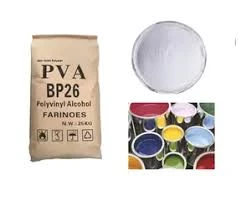The Role of HPMC in Manufacturing An Overview
Hydroxypropyl Methylcellulose (HPMC) is a versatile cellulose ether widely used in the manufacturing sector, particularly in pharmaceuticals, construction, and food industries. This synthetic polymer is derived from natural cellulose and has become an essential ingredient due to its unique properties, including its ability to form films, thickening capability, and its non-toxic nature. This article delves into the significance of HPMC in various manufacturing applications, its benefits, and future prospects.
HPMC in Pharmaceuticals
In the pharmaceutical industry, HPMC plays a crucial role as an excipient in drug formulations. It is primarily used to control the release of active pharmaceutical ingredients (APIs). By modifying the viscosity and gelation properties, HPMC allows for sustained or controlled release of medications, which can enhance therapeutic outcomes and improve patient compliance. Furthermore, HPMC acts as a binder in tablet formulations, ensuring that active ingredients are cohesively held together during production.
The versatility of HPMC also extends to its use in capsules. The material can be processed to create vegetarian capsules, providing a suitable alternative for consumers seeking animal-free products. These capsules disintegrate in the digestive system, ensuring effective delivery of medication without compromising efficacy.
HPMC in Construction
In the construction sector, HPMC serves as a vital additive in various building materials, including tile adhesives, plaster, and paints. Its water-retention properties contribute to enhanced workability and adhesion of these materials. For instance, adding HPMC to cement-based mortars improves their flexibility and prevents drying shrinkage, ultimately enhancing the durability of structures.
hpmc manufactur

Moreover, the incorporation of HPMC in paint formulations enhances viscosity and provides a smooth finish. This is crucial for ensuring even application and longevity of the paint on surfaces. As the construction industry increasingly prioritizes sustainability, HPMC’s biodegradable nature aligns perfectly with eco-friendly practices, ensuring that manufacturers can meet stringent environmental regulations while maintaining performance quality.
HPMC in Food Production
In the food industry, HPMC serves multiple functions. It is commonly used as a thickening agent, stabilizer, and emulsifier in various food products. Its ability to gel makes it an attractive option for products requiring texture enhancement, such as sauces, dressings, and ice creams. Notably, HPMC is recognized as safe for consumption, making it suitable for use in a wide range of food applications.
Additionally, HPMC acts as a preservative by providing moisture retention, which helps prolong the shelf life of food products. This characteristic ensures that manufacturers can deliver high-quality products to consumers without compromising safety.
Future Prospects
As industries continue to evolve, the demand for eco-friendly and sustainable solutions grows. HPMC, with its biodegradable properties and wide-ranging applications, is poised for increased adoption across various manufacturing sectors. Ongoing research into enhancing its functionality and exploring novel applications will likely propel its use in emerging markets, including bioplastics and advanced pharmaceuticals.
In summary, Hydroxypropyl Methylcellulose has established itself as a critical component in diverse manufacturing sectors. Its unique properties cater to the demanding needs of pharmaceuticals, construction, and food production while aligning with global sustainability goals. As innovation continues to drive the market, HPMC is set to play an even more significant role in enhancing manufacturing processes and product quality in the years to come.
-
Rdp Powder: Key Considerations for Wholesalers in the Building Materials IndustryNewsJul.08,2025
-
Key Considerations for Wholesalers: Navigating the World of Hpmc - Based ProductsNewsJul.08,2025
-
Hpmc Detergent: Key Considerations for WholesalersNewsJul.08,2025
-
Key Considerations for Wholesalers: China Hpmc For Tile Adhesive, Coating Additives, Concrete Additives, and MoreNewsJul.08,2025
-
Crucial Considerations for Wholesalers: Navigating the World of Construction MaterialsNewsJul.08,2025
-
Key Considerations for Wholesalers Sourcing Additive For Cement, Additive For Concrete, Additive For Putty from Additive Manufacturer Shijiazhuang Gaocheng District Yongfeng Cellulose Co., Ltd.NewsJul.08,2025




